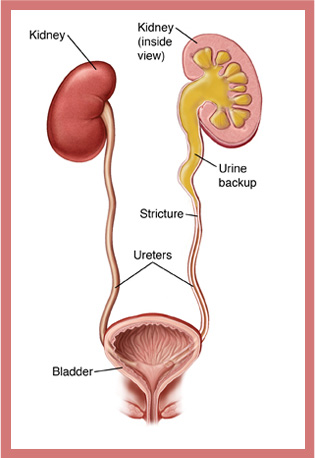Symptoms like painful urination and frequent trips to the bathroom may appear. These signs might also lead to more dangerous issues without treatment. Managing these symptoms quickly will aid in enjoying your daily life.
This guide aims to teach patients about urethral stricture treatment. It discusses various aspects like symptoms, causes, and treatment choices available today. Equipping you with this knowledge helps you become an active partner in your care.
Understanding what to expect helps reduce anxiety about the unknown. Being informed allows you to make better decisions about your path forward. This empowers you to take charge of your condition, maintaining a good quality of life for years.
Understanding Urethral Stricture and Its Implications
The urethral stricture condition affects the urethra, which helps urine flow from your bladder to outside. When this tube has a narrowing, the flow of pee can become restricted, causing various issues in your life.
Even though many men face this problem, women aren’t immune—both can experience challenges. Men deal with strictures more because of their body structure. Strictures cause trouble peeing and make everyday tasks harder, possibly leading to infections or kidney worries.
Leading a normal day becomes tough when you have a urethral stricture. You plan around restroom availability due to frequent bathroom needs. Discomfort or painful symptoms make it harder for people to stay positive or cheerful. Quick treatment helps ensure a life that’s as normal as it can be.
Causes and Risk Factors Leading to Urethral Strictures
The narrowing of the urethra happens when scar tissue forms. This scarring results from injury or inflammation that limits urine passage. Reduced space for urine flow leads to urethra stenosis, affecting urination ease significantly.
Infections like sexually transmitted diseases can lead to urethral stricture causes. Trauma, such as a blow to the pelvis, is also a risk. Some medical treatments, including catheterization, might cause unintentional injury leading to scarring. Over time, these treatments contribute to tissue build-up, affecting the urethra.
Age and medical history shape risk factors for urethral issues. Older individuals have more exposure to problems over time. Men face higher risks due to anatomical differences in their urethras. Past urological treatments increase chances of complications occurring.
Recognizing Symptoms Early: Key to Timely Intervention
Recognizing symptoms like painful urination and trouble emptying the bladder can indicate serious issues.
Recording these signs regularly can help your doctor find the best treatment plan for you. Note how often you feel discomfort and how it affects your life. This ensures a smoother, more effective healthcare experience.
Don’t delay if severe pain or total urinary block happens suddenly. Fast medical attention is critical to prevent further health problems. Early action against urethra narrowing improves outcomes and manages the condition better.
Engaging Health Professionals for Successful Diagnosis
Diagnostic processes kick off with chats about symptoms and health history. Tests such as uroflowmetry, which measures urine flow, might be needed too. Urologists search for evidence of urethral stricture to confirm this and choose the best urethral stricture treatment.
Today’s medical tools ensure procedures are comfy and minimal in discomfort. New methods mean faster tests, easing your worries about what happens next.
Being open and clear when talking to doctors is vital. Share every symptom and all your health info, no matter how small. Ask questions if you don’t get something about the diagnosis or urethral stricture cure. Good talk leads to care that fits you best.
Exploring Non-Surgical and Surgical Treatments
The severity of a urethral stricture greatly influences treatment decisions. For less severe cases, non-invasive options may suffice, whereas bulbar urethral stricture and more severe situations usually need surgical options.
For mild-to-moderate cases, urethral dilation stretches the narrowed area, while catheterization helps keep urine flowing. These treatments assist in managing severity and offer relief without needing surgical procedures.
In more severe instances, surgery might be necessary through Direct Visual Internal Urethrotomy (DVIU) or urethroplasty. These procedures aim to remove scar tissue and bring back normal urinary function. While more involved, they often provide lasting urethral stricture cure results, crucial for severe or recurring cases.
Consulting a specialist helps identify the most suitable approach given the stricture’s details.
Life with Urethral Stricture: Coping Mechanisms and Self-Care Tips
Living with urethral stricture presents its own set of challenges, but by organizing your day-to-day life, you can greatly enhance your quality of life. Here’s what you need to keep in mind:
- Track Your Symptoms: Keep a log of any changes or discomfort you experience. This will help your doctor better understand and manage your condition.
- Hydration is Key: It’s important to stay hydrated without overloading your system. Drink around two liters daily to help maintain flow and reduce urine irritants.
- Balanced Diet: Eating nutritious foods like fruits, vegetables, and lean proteins can benefit your urinary system and reduce inflammation.
Hydration plays a vital role in managing symptoms effectively. The right fluid balance helps improve flow and eases urethra problems.
To support healing, be cautious about what you consume. Avoid beverages and foods known to irritate the urinary tract:
- Caffeine and alcohol aren’t great if you want less irritation.
- Spicy foods may cause discomfort or worsen symptoms if eaten often.
- Artificial sweeteners and acidic fruits like oranges can trigger issues too.
Mindful eating practices can provide relief from daily discomforts and help manage symptoms efficiently.
Taking care of your mental health is essential when dealing with urethral stricture. It affects more than just the body—it impacts emotions too.
Getting involved with support groups allows you to share your experiences with others who understand. This sense of community can offer much-needed comfort and insights on what has worked for them.
Professional counseling can also help strengthen resilience against mental strain, while mindfulness or meditation practices can reduce stress levels. Including close family or friends in your care journey adds an extra layer of support that can make a significant difference.
Caring for your mental health is vital in overcoming the challenges associated with ureteral stricture disease.
Preventive Measures and Avoiding Recurrence
Preventing recurrence of urethral stricture involves consistent care and adjustments. Follow your treatment plan strictly, as instructed by your doctor. Keep away from activities that might cause injuries to the urethra area. Exercise caution with personal cleansing to prevent common infections causing strictures.
When undergoing medical procedures, be mindful of potential causes of urethra stricture. Opt for experienced professionals when needing procedures that involve your urinary tract. Pursue non-invasive methods carefully and adhere to all post-procedure guidelines given. Seek another opinion if uncertain about any suggestion, like urethra dilation.
Embracing safety during procedures aids in long-term management of urethral conditions.
Regular doctor visits are crucial to handling issues related to bulbar urethra. These consultations can pinpoint changes early and help adjust treatments beforehand. You’ll receive an all-round health check, ensuring you improve and maintain better control over your daily life.
Debunking Myths: What Patients Should Know
Many believe urethral strictures are untreatable, but this isn’t true. It’s crucial to debunk this idea and highlight viable, non-surgical options.
An early urethral stricture diagnosis improves outcomes with non-invasive methods. Patients have choices, and experts can clarify myths.
Believing that urethral strictures define your life is misleading. Modern care can restore quality and control in life.
Combining various treatments offers hope and favorable results. Trust professional advice as your go-to information source.
Knowing the facts dispels persistent myths about urethral strictures:
- Urethra stenosis affects anyone, though it’s more common in men.
- Non-surgical treatments offer long-lasting relief for many people.
- Emotional backing coupled with careful management enhances patient outcomes.
Being informed lets patients take control of their health journey.
Final Thoughts: Proactive Management Leads to Positive Outcomes
Here, we’ve explored some vital steps for handling stricture urethra effectively. Recognizing signs early on and communicating well with your medical team helps greatly.
Partnering with capable healthcare professionals ensures consistent guidance and care through your journey. Their expertise not only aids in tailoring your urethral stricture treatment, but also offers valuable reassurance.
Being proactive about your health can have a remarkable impact on your life. By addressing symptoms head-on and seeking timely assistance, you set the stage for a healthier future. Remember, with the right care, you can live life fully even while managing urethral stricture.

